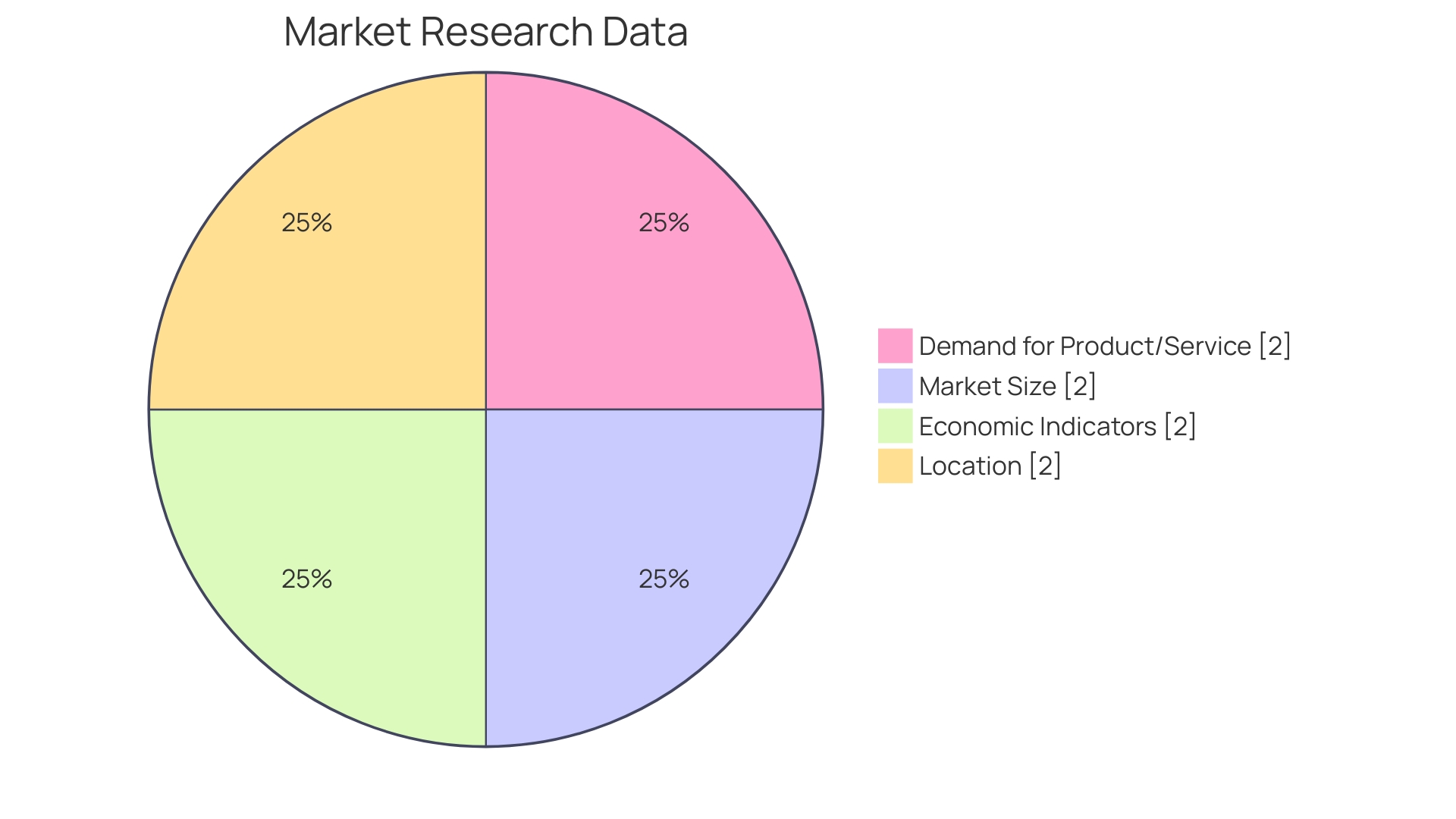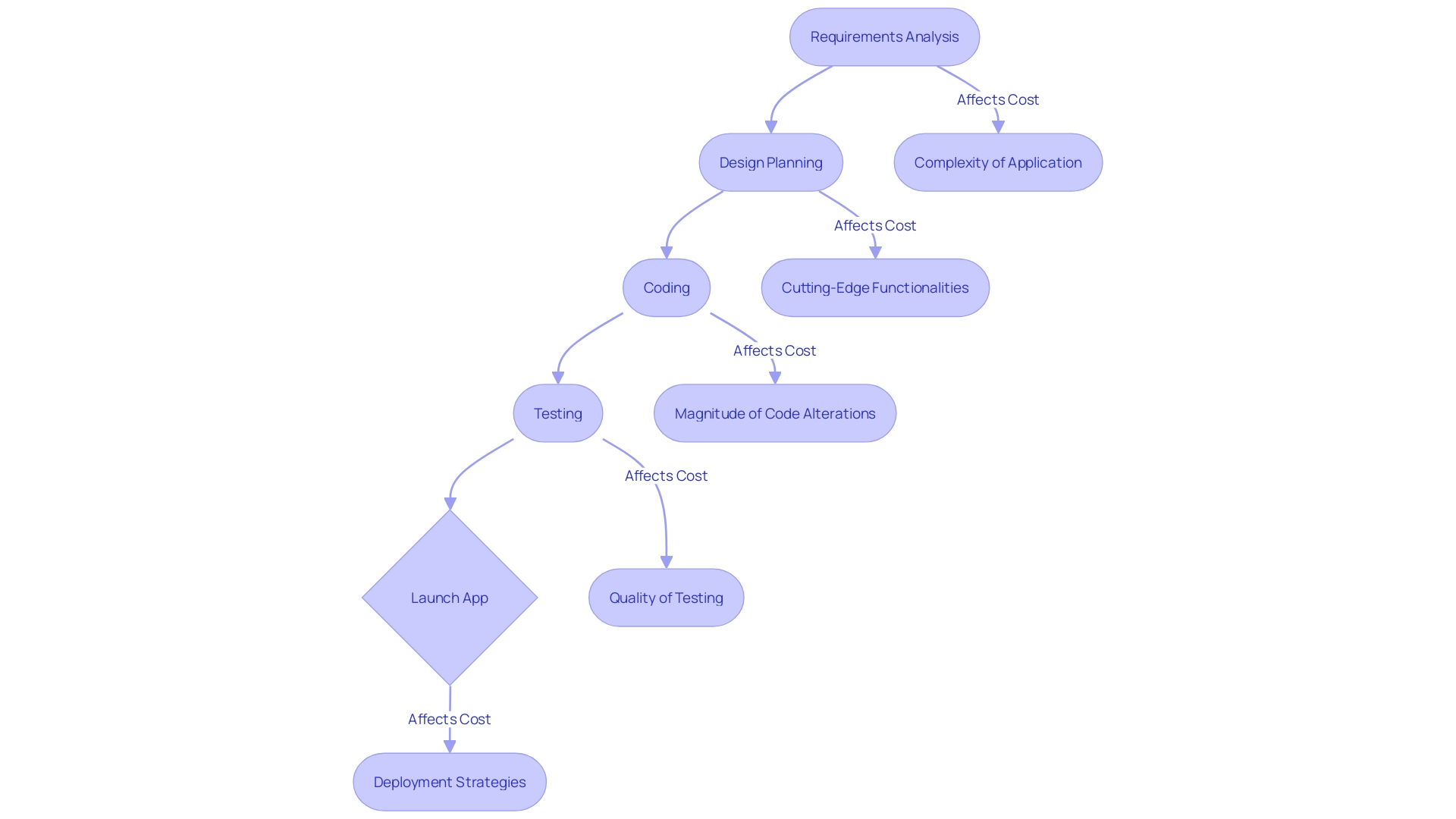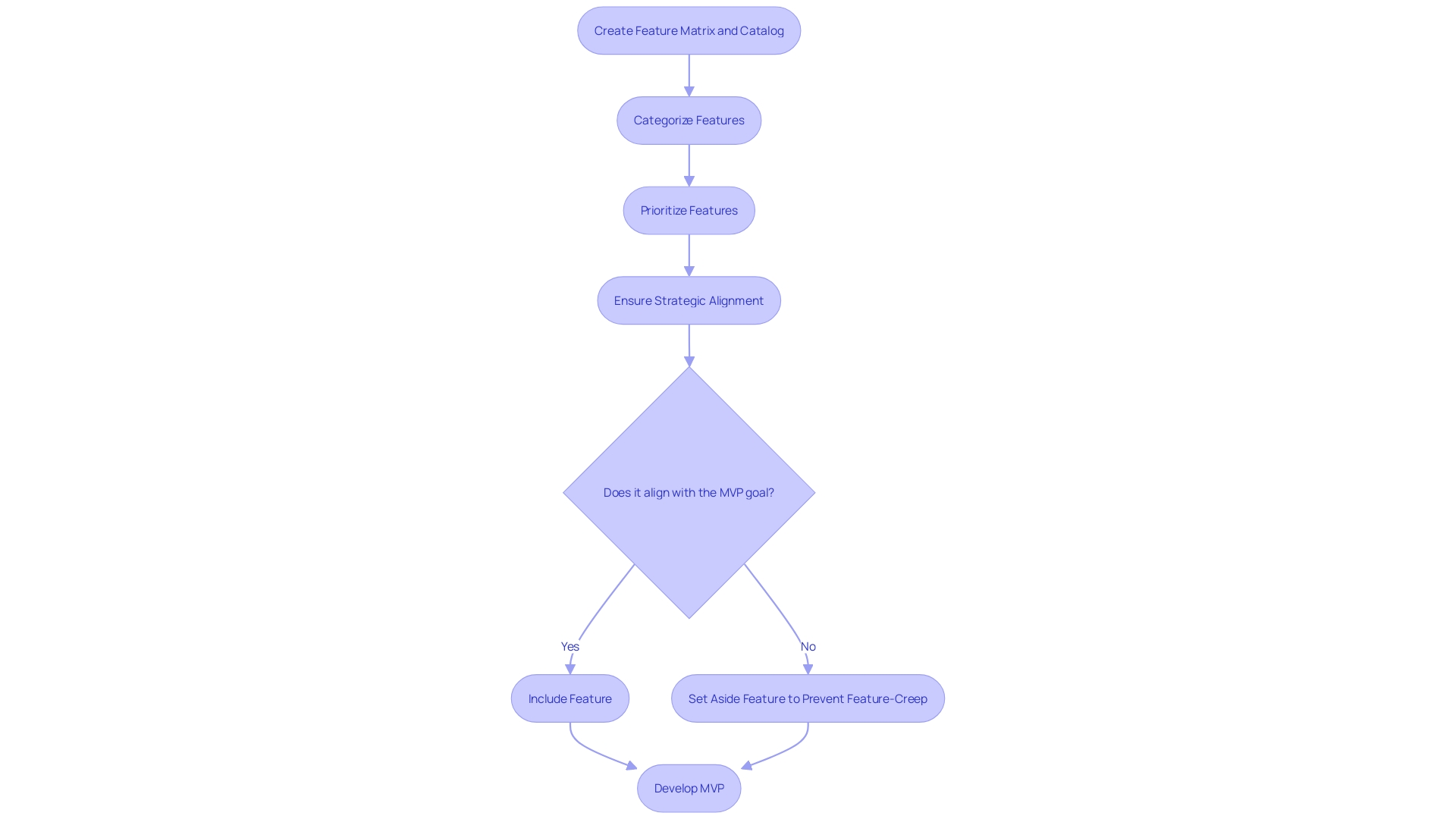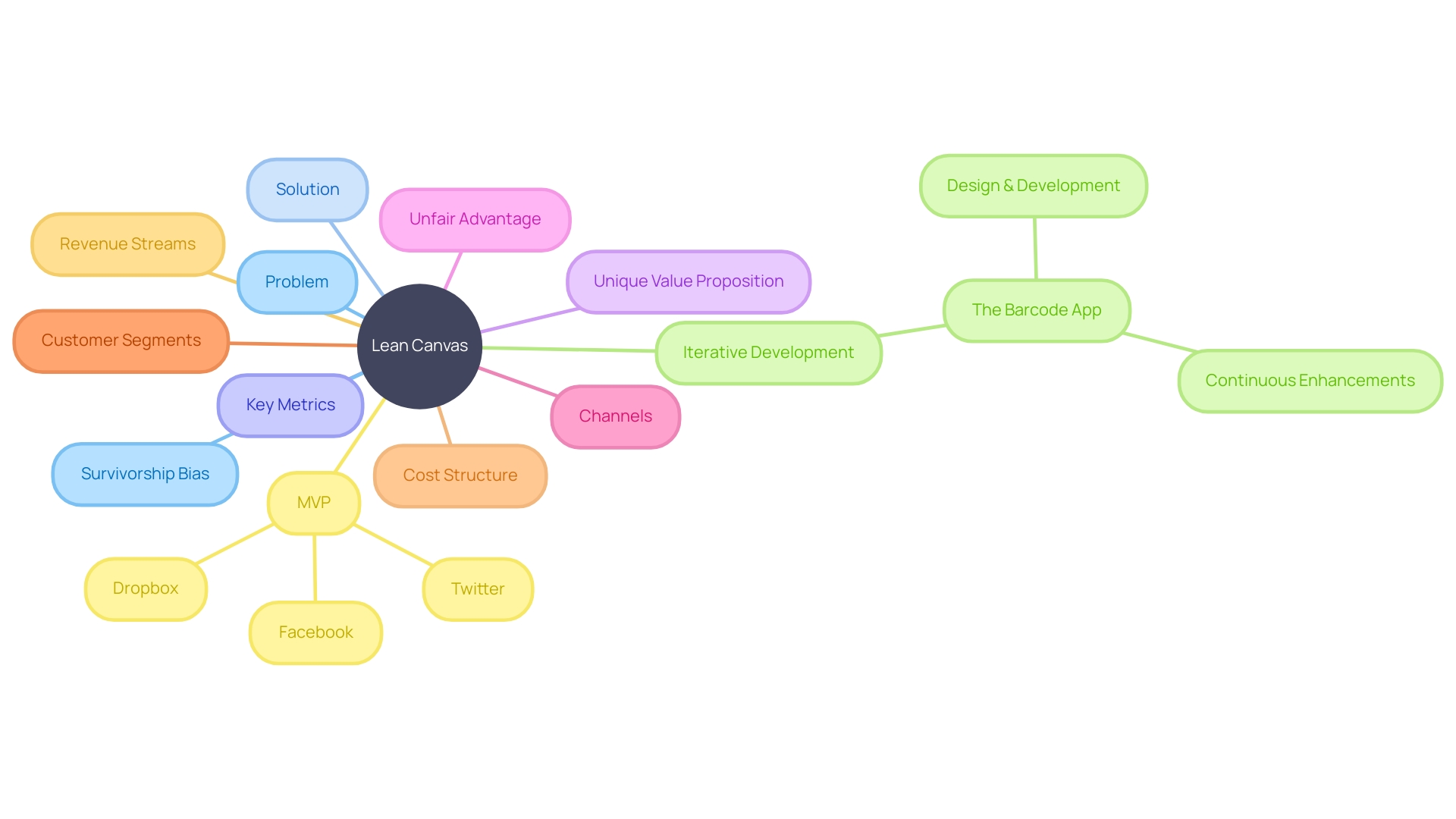Introduction
The article explores the process of building a Minimum Viable Product (MVP) and the factors that influence its development costs. It highlights the importance of identifying whether the product is a solution to a palpable problem or just a convenience-enhancing commodity. The article also discusses the type of application, project completion time, application framework, technology stack, feature prioritization techniques, and provides examples of successful MVPs.
By following a meticulous approach and considering these factors, entrepreneurs can effectively manage the budget and create an MVP that meets the needs of their target audience.
Why Build an MVP?
To effectively build a Minimum Viable Product (MVP), entrepreneurs must critically examine if their product is a true solution addressing a palpable problem or merely a convenience-enhancing commodity. This fundamental introspection shapes the MVP's development. For instance, envision a multi-business owner requiring a unified accounting application—the MVP for this software needs to concentrate on core accounting functionalities to provide a tangible solution.
Early product drafts should be stripped down to these necessities, bypassing extraneous features. This approach is reinforced by the dichotomy of creating a problem-solver versus a life-simplifier. A well-prioritized feature list, grounded in user feedback and rigorous self-evaluation, ensures the MVP remains lean and purpose-driven.
Often, what one perceives as a critical issue might not resonate universally—a sentiment echoed by entrepreneurs facing diverse challenges. Therefore, narrowing down to the essence of what the product aspires to be and the genuine need it fulfills is the cornerstone of determining its trajectory and potential success.
Factors Influencing MVP Development Costs
Embarking on the development of a minimum viable product (MVP) is a crucial strategy for modern businesses looking to innovate while minimizing risk. According to Harvard Business Review, over two-thirds of startups fail, often due to insufficient market need or the inability to raise capital—two hurdles an MVP can help overcome. Starting from as little as $10,000 to upwards of $350,000, the cost of creating an MVP can vary significantly and is influenced by multiple factors.
These include whether your project is intended as a novel solution to a pressing problem or a value-adding commodity, as suggested by our examples where businesses need tailored applications for group accounting. Global mobile app revenue is projected to reach $613 billion by 2025, signaling the high stakes and rewards of successful app development. Determining whether you’re solving a unique problem or enhancing convenience is not just a trivial consideration; it shapes the entire development process and cost.
To gauge the financial scope of your MVP, it's essential to recognize the diversity of problems your target audience may face, as the relevance of your solution directly impacts development complexity and cost.

Type of Application
Navigating the intricate landscape of mobile app development, professionals have witnessed exponential growth in user engagement and revenue generation, with Statista projecting over $613 billion in earnings by 2025. It's clear that a key question for businesses venturing into this terrain is the expense related to creating a mobile application. The monetary aspect is multifaceted, with development costs potentially starting at $10,000 and skyrocketing to $350,000 or beyond, primarily influenced by an array of determinants.
Delving into these cost-affecting factors, the magnitude of the application's complexity stands out. Sophisticated applications furnished with cutting-edge functionalities necessitate a robust investment in the various stages of the software development lifecycle. This sequence spans from meticulous requirements analysis and design planning to the tangible act of coding, which unto itself can be a substantial outlay in terms of resources, time, and the opportunity cost associated with not pursuing alternative ventures.
Nonetheless, the simplicity of an application with basic features can indeed mitigate development expenses. It's a misconception to view software engineering as solely a coding pursuit, for it encompasses a broader scope encompassing business need orchestration, conceptual validation, and immersive user experience design. As industry sage John Ousterhout notes in his treatise "Philosophy of Software Design," change amplification—a hallmark symptom of complexity—inevitably burdens teams by necessitating an extensive spread of code alterations to implement even minor application updates.
This evaluation elucidates the direct connection between application intricacy and the consequent financial implications.

Project Completion Time
The effort involved in the development of a minimum viable product (MVP) goes beyond mere coding; it's a nuanced journey that intersects with project timelines, resource allocation, and ultimately, the budget. The complexity of this process echoes the intricate challenges faced by data scientists, who often navigate a labyrinth of innovative requirements and burdensome, repetitive tasks, which the Boston Consulting Group reports consume valuable time that could otherwise foster groundbreaking discoveries. Moreover, the complexity and scale of large projects can magnify costs unpredictably—much like how unforeseen interactions within technical systems can demand expensive recalibrations midway, a reality confirmed by the difficulties common in colossal infrastructural endeavors.
Against this backdrop, precision in managing the temporal aspect of MVP development becomes paramount. A study by the Boston Consulting Group revealed that just 44% of data science models reach production, indicative of the high rate of projects stalling due to unanticipated hurdles. It's a stark reminder that meticulous planning and agile response mechanisms are imperative to mitigate potential cost escalations.
By embracing this meticulous approach, companies are more adept at steering clear of the dreaded 'break-fix' pattern that plagues many ambitious projects, ensuring that MVPs not only see the light of day but do so without breaking the bank.
Application Framework and Technology Stack
Selecting the appropriate application framework and technology stack is not just a technical decision; it's a strategic move that directly affects the economics of MVP development. Different technologies command various levels of expertise, and certain choices may necessitate licenses or skilled personnel, thereby influencing your development budget. It's vital to comprehensively investigate the performance of potential technologies.
Are there high-performing applications built on this technology? Does it align with your specific use case? Achieving a balance between cost-effectiveness and suitability is key.
Start by listing out all intended features, prioritize ruthlessly, and remember: an MVP should be lean yet functional. Aim for a succinct product purpose, supporting only core functionalities to validate your market fit. By launching with a focused set of features, early user feedback becomes a compass directing subsequent enhancements to ensure your MVP evolves into a solution that truly meets user needs.
And so, embarking on the journey of MVP development means weaving a technology selection that not only supports your vision but also makes financial sense—balancing the scales of affordability, performance, and potential.
Feature Prioritization Techniques
A meticulous approach to MVP development is essential for both budget control and ensuring the product addresses the needs of your target audience effectively. One fundamental tactic is starting with creating a feature matrix—a comprehensive overview of your product's offerings—to keep focus on high-value elements. Similarly, a feature catalog or taxonomy aids in categorizing and prioritizing what needs to be developed first.
These tools are pivotal for high-stakes decisions, eliminating the all-too-common pitfall of feature-creep, which can inadvertently inflate costs and complicate product offerings. Remember, as Dave Fore highlighted, features are the currency in this domain, but must be managed wisely to prevent overwhelming the product. A visual analysis through sketches and prioritized lists is equally beneficial for conceptual clarity.
It's critical to crystalize an MVP's essence into a single statement of purpose, reflecting on the core functionalities that define its minimum viability. Doing so aligns development with strategic objectives and mitigates the risks of excessive, untimely expansion.

Cost Breakdown and Estimates
When embarking on mobile app development, particularly for managing complex business functions like multi-entity accounting, it's important to start by ascertaining whether the app is meant to be a solution to a specific challenge or a commodity that enhances convenience. This introspective question influences your investment, as the functionality of solving a problem or making processes smoother carries varying implications for cost. Mobile app development costs can range significantly, from as little as $10,000 to over $350,000, impacted by factors such as the number of development hours, the intricacy of design and user experience, the extent of third-party integrations, infrastructure requirements, and the anticipated ongoing maintenance.
Statista's forecast of over $613 billion in revenue from mobile app downloads by 2025 underscores the potential return on a well-calculated investment, provided the financial outlay aligns with the strategic purpose of the app. By clear-cut comprehension of these multiple cost-driving elements, careful planning is made possible, setting a foundation for the app's success without overburdening financial resources.
Examples of Successful MVPs
Utilizing the strategic framework of a Lean Canvas can be instrumental in MVP development. This streamlined approach distills complex ideas into twelve essential building blocks, providing clarity and structure to the process. A thorough examination of these elements aids in distinguishing whether your MVP is positioned as a solution to a pressing problem or a commodity that enhances ease of living.
The distinction is vital, as it influences the perception of value and, inherently, the associated costs. Reflecting on this dichotomy, as shared by entrepreneurs, "Are we a solution or a commodity?" becomes a consequential inquiry.
What one might perceive as a critical problem, based on personal context, might be trivial to others. Consequently, understanding the true nature of your offering is foundational to managing costs accurately and emphasizing the right features for a successful MVP.

Conclusion
To build a successful Minimum Viable Product (MVP), entrepreneurs must carefully consider factors such as problem-solving versus convenience-enhancing, development costs, project completion time, application framework, technology stack, and feature prioritization techniques.
Determining whether the product solves a palpable problem or enhances convenience is crucial. By prioritizing essential features and gathering user feedback, entrepreneurs can create a lean and purpose-driven MVP that meets user needs.
Development costs for an MVP vary based on factors like the type of application, project completion time, application framework, and technology stack. Simplifying the application and focusing on core functionalities can mitigate expenses.
Managing project timelines is essential to avoid cost escalations. Meticulous planning and agile response mechanisms help in timely delivery and prevent budget overruns.
Choosing the right application framework and technology stack directly impacts the economics of MVP development. Balancing cost-effectiveness and suitability ensures efficient resource utilization.
Effective feature prioritization techniques like creating feature matrices and prioritized lists prevent cost inflation and maintain focus on high-value elements. By staying true to the MVP's purpose, entrepreneurs can address user needs without overwhelming the product.
Understanding the true nature of the offering and emphasizing the right features enables accurate cost management. By following a meticulous approach and considering these factors, entrepreneurs can effectively budget and build a successful MVP that meets user needs.
Build a purpose-driven MVP that meets user needs with BestToolbars!





